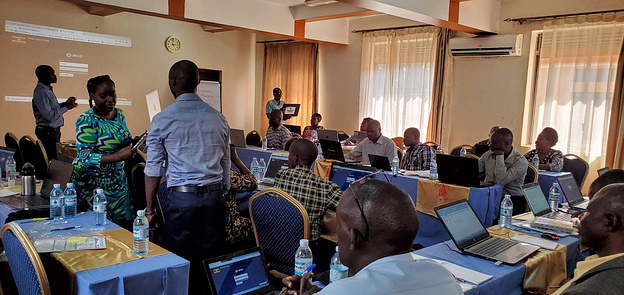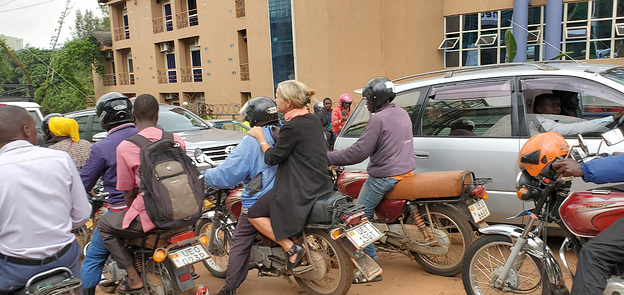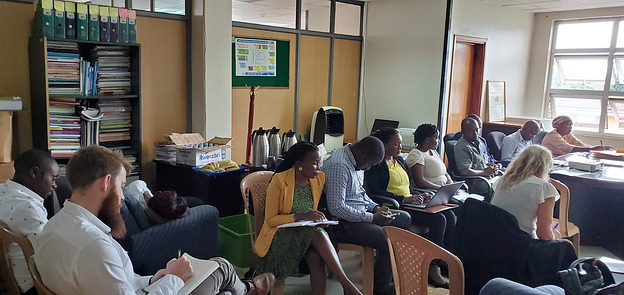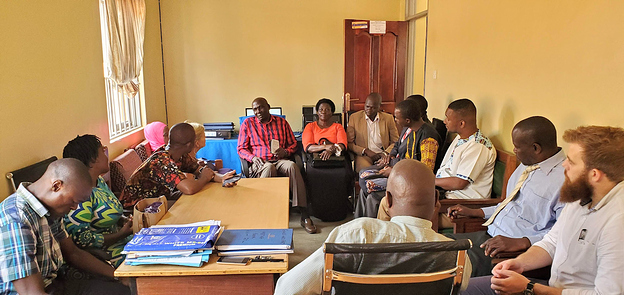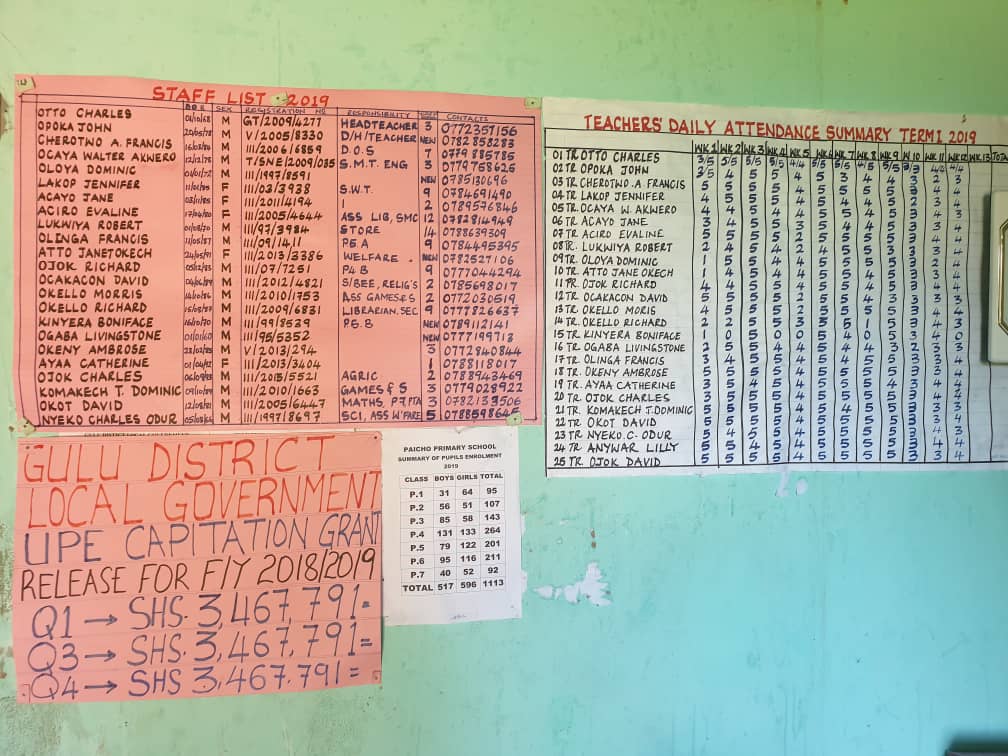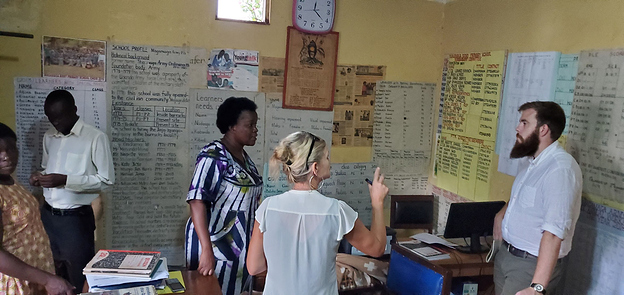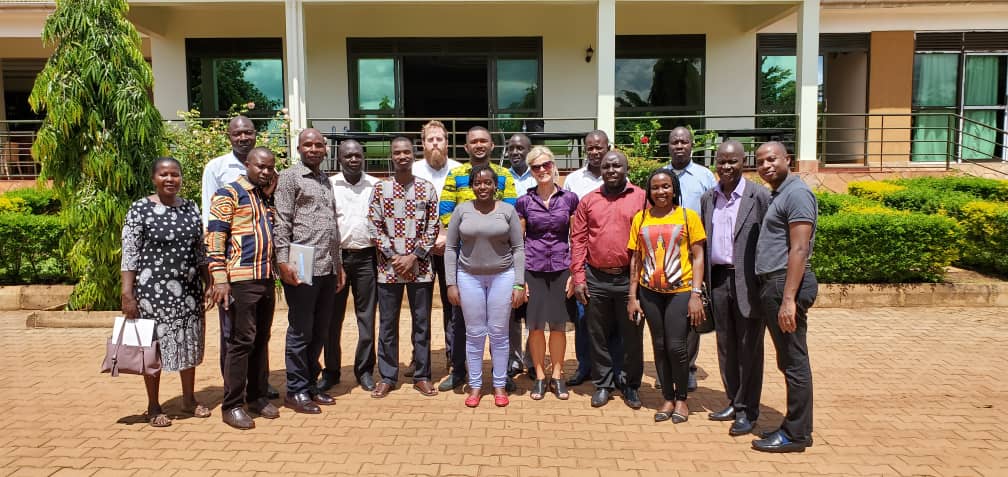Updates on DHIS2 for Education Management Information System (EMIS) in Uganda
In Uganda, the Education Management Information System (EMIS) is centralized at the Ministry of Education and Sports (MoES). The MoES conducts an annual statistical census and centrally enters all the reports in an MS Access database at MoES HQ. Data analysis is then done by STATA and feedback is sent back to schools through hard copy prints or electronically via mail and other information portals. This process is not only costly but time-consuming and leaves the districts with limited analysis and data use opportunities. Since March 2019, the Uganda MoES Basic Education Department, with support from NORAD, has been piloting the use of DHIS2 for EMIS; Two districts of urban, peri-urban and rural nature were selected to pilot DHIS2 for EMIS.
The process started with engaging MoES with a series of discussions and presentations of the prototype to the different departments. Finally, the Department of Basic Education was willing to pilot and appointed a coordination officer Mr. AbdulMalik Muwanga who has been key to the milestone realized in the pilot. The two selected districts were visited and district leadership (CAO, DEO, District Planner) was engaged. They overwhelmingly welcomed the pilot and pledged to support it to success. The major objective of this pilot at the district level was to improve data availability, data quality and increase data utilization at all levels of education service delivery to support monitoring of key performance indicators and guide decision making, prioritization and allocation of resources at all education levels.
Customization of the Pre Primary and Primary annual data collection tools was completed and schools master facility list imported into DHIS2 in close collaboration with the MoES Basic Education and Statistics teams. A series of training workshops were held including three days of training on data entry, validation and cleaning in July before the start of data entry exercise. Later the district and MoES HQ team were trained on data analysis, use and presentation after data was entered and validated by the districts. Districts were equipped with tools for data collection and entry as well as setting up district infrastructure (laptop, desktop, and internet connectivity). The district education sector embarked upon entering backlog data for 2016-2017 and distributed forms for collecting 2018 data, validated it and entered into the system at the district level.
Hands-on training for the pilot districts in Jinja July 2019
Alongside a similar pilot in The Gambia, the need to learn from each other called for stakeholders and funders implementation site study visits to both The Gambia and Uganda. In October 2019. The team visited the Gambia and from the 11th to 15th of November 2019, HISP Uganda together with the MoES hosted a DHIS2-eEMIS stakeholder engagement activity with representatives from the University of Oslo, HISP West Africa who are supporting The Gambia in the pilot, MoE Gambia and Save the Children Norway.
Beating Kampala Jam to make it in time for the meeting at the MoES, Prof Kristin Bra jumps on a Bodaboda
The team met with officials from the MoES (Basic Education and Statistics including UNICEF Uganda) where Basic Education shared progress, achievements, and challenges in the pilot. In their presentation, the team was excited about how much progress the innovation has achieved in terms of availing data by “just a click” at all levels especially in the districts in a short time with few resources.
Mr. AbdulMalik Muwanga sharing pilot experience from the MoES Basic Education perspective
During the 3 days site visits in the districts, the teams visited district leaders like Chief Administrative Officers, District Education Officers, and schools to understand the reporting flow and data management from the school level to district and national level (MoES). The districts and Municipality shared their pilot progress, achievements and challenges through their presentations. Gulu district and the municipality had concrete examples of how the data from the system had supported the district in planning and the DEO for Gulu said that: “at the moment I am going to use the data from the system to make my presentation at the district budget conference”. The district had used the data to earmark schools that needed more classrooms based on the analysis of the student-classroom ratio and identified schools that needed more teachers based on the teacher-pupil ratio. It was not surprising that the districts were willing to continue using the system even if the MoES does not scale up. They also shared the recent example of how the data from the system supported the measles and rubella mass immunization campaign together with the health sector in the district. They used the data from DHIS2-EMIS to identify the immunization pots (schools) and target population.
The team at the office of the Municipal Education Officer for the Gulu Municipality.He said that the DHIS2-EMIS system was providing the district education departments an opportunity to report and use their Education data for planning.
Data beyond the walls (display of data at a school in Gulu district).
In Mayuge, the district requested MoES to adopt this system for it not only reduces the paper burden but because data/information is available by just a click of the button. This was delivered by the District Planner for the remarks from the CAO.
The district dashboard has been a game-changer for the district Education team who have always been envious of their counterparts from the Health sector sharing DHIS2-HMIS dashboards.
The interactions with the different school administrators showed the need for better dissemination strategies of information after analysis. Feedback to the school administrators is important with clear interventions on the data gaps and challenges identified like high school drop out rates, planning for non-teaching staff which they felt the MoES was collecting the data without using it for planning.
Discussions with Headteachers on data collection and use at school level in Mayuge district.
Lessons Learned
- The districts are committed and willing to continue using the system even if the pilot ended without additional funding, they agreed that this needed to be properly budgeted for through the district planners office but they wished that this is scaled up to other districts and elevated to higher Education levels.
- The district’s Education departments were very excited about having the shared wi-fi internet which has eased reporting, coordination, and communication with other departments.
- To the district the pilot is by far successful as evidenced by the ways how data from the system has been used as shared during the presentation.
- The lack of EMIS policy in Uganda to enforce reporting for schools within the districts was still affecting the reporting rate especially the private schools as government schools reporting rates were all above 90% for 2018.
- The desire by the headteachers to have feedback from the data collected by the MoES and district with simple and easy to understand analysis promptly to support decision making at school level was evident from the school administrators. (This calls for a proper dissemination strategy)
- There is a need to continue building capacity not only at the district level in use of the system but also at school level on how to do proper recording keeping since they are the primary data sources.
Prof Kristin from UIO and Luke Stannard from STC Norway at one of the primary schools in Mayuge looking at the records in the Headmasters office during the visit.
- The districts can collect, manage and enforce reporting within schools, especially government schools. This is seen based on the dashboard where districts have more than 80%reporting rates for the government-aided schools for 2018 data that was collected by the districts.
Gulu DLG showing 100%reporting rates for government-aided schools.
- Collaboration with Partners supporting the Education sector program is important. HISP Uganda has been working closely with Save the Children Uganda to engage the MoES for bigger buy-in and support for scale-up. The team is still engaging with UNICEF for support moving forward.
- It is possible to use the existing capacity for DHIS2 in health within the district to enhance the use of DHIS2-eEMIS.
The districts have not only embraced the system, but they are also looking forward to having forms for other education levels customized like secondary and tertiary to support data collection and entry. The office of the DEO can only be fully in control of these institutions if they have data on them. They requested the MoES and donors to continue the support and ensure scale up to other districts and higher levels of learning.
MoES officials, HISPU, representatives from HISP west Africa, UIO and STC Norway pose for a photo in Mayuge district after the district presentation.
By
